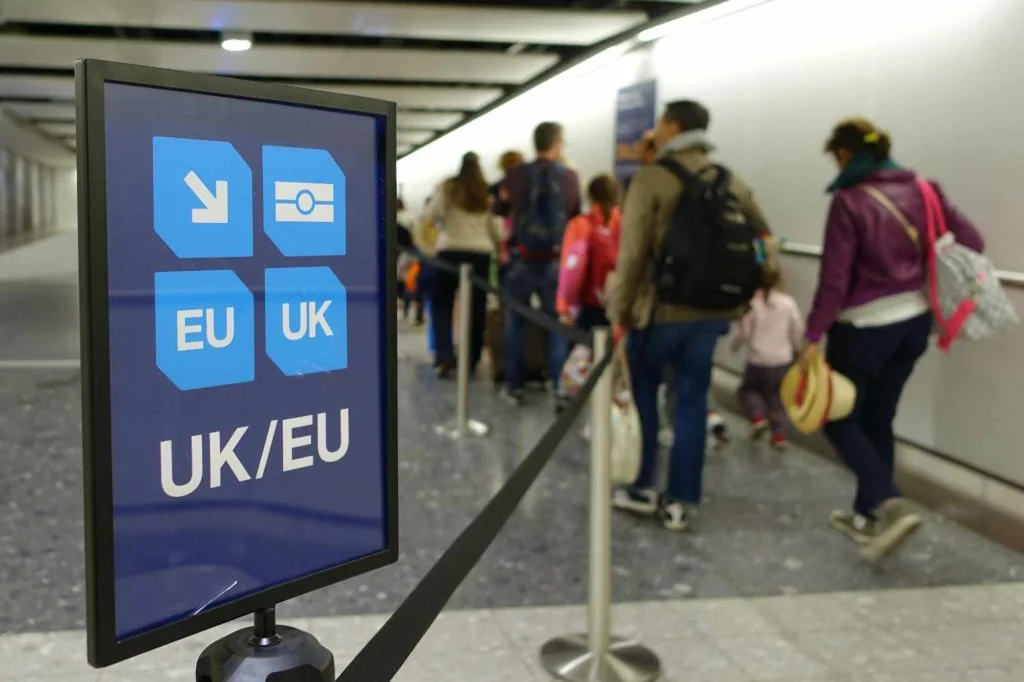
How far back should I go when calculating exposure for retrospective holiday pay?
At the end of 2014 the EAT confirmed that non-guaranteed overtime (and certain allowances) should be included when calculating holiday pay (AMEC Group Ltd v Law and related appeals). This decision followed the judgment in Lock v British Gas where the courts found that commission should be included when calculating holiday pay. These cases have also now opened the gates for other types of variable pay needing to be included in holiday pay calculations (for a summary of the types of variable payments that could be caught see our article: What should I be including when calculating holiday pay).
Inevitably, these decisions attracted media focus as many employers who pay workers only basic pay during periods of annual leave are rightly concerned with both the cost of holiday pay moving forwards as well as the amount of back pay they could now potentially be liable for. This article considers the potential extent of those historic holiday pay liabilities as well as looking at ways in which those liabilities could possibly be reduced.
The bad news for employers is that historic liabilities could be significant; particularly where a number of workers are affected and/or variable payments make up a large proportion of workers' pay packets.
However, the good news for employers is that there are now some potential limitations which can be deployed to restrict historic liabilities, in particular:
- The government has introduced new regulations (the Deduction from Wages (Limitation) Regulations 2014 "Limitation Regulations") that provide for a two year back stop on most unlawful deduction from wages claims submitted on or after 1 July 2015.
- Helpfully for employers, the judgment in the AMEC case also suggested that, where there is a gap of three months or more from the last underpayment of holiday pay, a worker will be time barred from bringing an unlawful deductions claim in respect of underpayments that occurred prior to that three month gap.
These limitations, and how employers may be able to use them in practice, are considered in more detail below.
Long stop date of two years
Following the AMEC case there was inevitably a lot of concern amongst businesses that they could be facing a tsunami of claims for historic holiday pay, potentially going back years. To limit employers' financial exposure, particularly at a time where businesses were struggling in a difficult economic climate, the government introduced the Limitation Regulations. These provided that most unlawful deduction from wages claims (including holiday pay) submitted on or after 1 July 2015 would be subject to a long stop date of two years on liability from the date the claim was submitted.
The Limitation Regulations also provide that the Working Time Regulations 1998 do not confer a contractual right to paid leave. This provision is aimed at ensuring that, generally, claimants cannot side step the two-year back stop by bringing a breach of contract claim in the civil courts instead, which would have a limitation period of six years.
The Limitation Regulations will be welcomed by employers. Assuming that an employer has not received a claim prior to 1 July 2015 then, for claims presented after that date, the starting point when calculating exposure for historic holiday pay claims will be the two year limitation period under the Limitation Regulations.
Can historic liability be limited further?
Potentially yes. The AMEC case provided another basis for arguing that the scope for retrospective claims can be limited. Under previous case law, the courts had allowed unlawful deduction claims to stretch back over years on the basis that each individual underpayment formed part of continuing series. As such, as long as the last underpayment was within three months of the date on which the claim was brought, the claimant would be able to seek recovery of all underpayments in that series. However, in the AMEC case the EAT reconsidered the concept of a "series of deductions" and concluded that a gap of more than three months between any two unlawful deductions or non-payments would break that series of deductions. This means that if there is a gap of more than three months in any alleged series of deductions, the courts will lose jurisdiction to hear claims for the earlier deductions, thereby restricting the ability of workers to bring retrospective claims for underpaid holiday.
This is a novel reading of what is required for a series of deductions. In particular, as well as departing from previous unlawful deductions case law, it also does not fit comfortably with other similar concepts of a "continuing act" in discrimination law, where the cases have determined that individual acts of discrimination can form a continuing act regardless of whether they occur three months or more apart (Southern Cross Healthcare v Owolabi). Commentators have therefore suggested that the findings in AMEC on this point were incorrect and were simply driven by public policy to limit the potential liability employers could be facing. Permission to appeal this issue was granted as the judge referred to it as "arguable as well as of public importance". Although the AMEC decision is not itself being appealed, it is likely that this issue will be considered in future litigation. However, at least for the time being, the AMEC decision gives employers two opportunities to try and further limit historic liabilities:
- If a worker has not taken any holiday at all for a sufficient period, so that there is a gap of more than three months between holiday pay payments (in which case there cannot have been any underpayment of holiday pay during this period) then they will not be able to bring a claim for historic holiday pay prior to that three month gap.
- If a worker has been properly paid their holiday pay for at least three months then, even if there are subsequent underpayments, any underpayments that predate that three month gap will also be out of time.
How likely is it in practice that there will be a three month gap?
This will depend on the pattern of a worker's holiday. In particular, the first option considered above will be made much less likely where a business closes on public holidays and workers are given time off on these days. In these circumstances, the holiday year will be frequently punctuated by holiday days and, therefore, it will be harder to find a sufficient gap where a worker has not taken any holiday at all. It will then become necessary to consider the nature of the holiday further to determine if there may be opportunities for deploying the second argument considered above.
The requirement to include variable pay within holiday pay calculations only relates to the first four weeks' of annual leave that derive from the European Directives ("Euro Leave"). It is therefore open to employers to argue that holiday pay (even if only paid at a worker's basic rate) for the additional 1.6 weeks provided for in the UK or any additional holiday granted under the employment contract ("UK Leave") has been paid correctly and that there has been no underpayment in respect of it. Holiday payments for UK Leave would therefore be lawful and could assist in creating a gap of at least three months between unlawful deductions in respect of underpaid Euro Leave. In the AMEC case, although the EAT didn't specifically decide the point, it suggested that, in the absence of an agreement to the contrary, it could be argued that t it could be argued that the fact that UK Leave is described as "additional" leave suggests that it is the last to be agreed on during any given holiday year. Consequently, "compliant" payments in respect of UK Leave taken during the course of each holiday year may have the effect of creating a gap of at least three months between periods of non-compliant payments to further restrict the ability to claim retrospective holiday pay.
When considering how far back an individual's holiday pay claim can go back, employers should therefore:
- Have in mind a long stop of date of two years (assuming the claim has been submitted on or after 1 July 2015).
- Look at whether the employee has a gap in respect of holiday pay payments of more than three months, in which case there will be no jurisdiction to hear claims in respect of periods of holiday taken prior to the three month gap.
- If there is not a period of three months when no holiday pay has been paid, look at whether there is a three month period when it can be argued that only UK Leave has been taken to create a gap of three months between unlawful deductions.
These options are considered further in the examples below.
Historic liability examples
The examples below are based on the following:
- A holiday entitlement of 28 days per year, inclusive of bank holidays, where workers are not required to work bank holidays as their place of work is closed i.e. 20 days' annual leave ("AL") and eight bank holidays ("BH")
- Holiday pay being paid at a worker's basic rate and not taking into account variable payments which should now be included in Euro Leave holiday pay calculations
- The holiday year running from 1 July to 30 June
- Workers being paid their monthly salary on the 28th of each month i.e. pay for the whole of January being made on 28 January (making the relevant date, for the purposes of spotting a three month gap, the 27th of the month three months after the month in which holiday is taken).
- Euro Leave being the first 20 days agreed and taken in a given leave year
- There is nothing in the employment contract which states that pay for UK Leave is calculated in the same way as Euro Leave
Worker A
If a claim were brought in July 2015, Worker A's entitlement to back pay for underpayments of holiday would be limited to any underpayments made from April 2015 onwards. Worker A will be out of time to bring a claim in respect of any earlier underpayments. The reasons for this are set out below:
- Worker A has had a number of gaps where three months have passed between payments in respect of holiday pay. The most recent of these is the gap between holidays taken in January and April 2015. Worker A was paid in respect of the holiday he took in January 2015 on 28 January 2015, and he was paid in respect of his April 2015 holiday on 28 April 2015. Therefore, even though there was not a gap of more than three months between the dates on which Worker A actually took holiday, there was a gap of more than three months between the dates on which he was paid for that holiday which is the relevant date for unlawful deduction of wages claims. (All we need for this gap to arise is to find two consecutive months during which no holiday was taken.)
- Unfortunately, whilst we can limit the exposure in respect of Worker A to the period from April 2015 onwards, we cannot exclude this most recent holiday as Worker A did not exhaust his entitlement to Euro Leave until May 2015. Accordingly, if a claim is brought in July 2015 these most recent holiday underpayments would still be in time
Worker B
Worker B will not have any entitlement to back pay at all and will be out of time to bring a claim in respect of any holiday pay that predates July 2015. The reasons for this are set out below:
- At no point has Worker B had a gap in excess of three months between salary payments that include an element in respect of holiday pay
- However, Worker B exhausted her entitlement to Euro Leave in February 2015. Accordingly, if she were to bring a claim in July 2015 that claim would fail as the seven days' holiday she has taken since February 2015 has all been UK Leave, creating a gap of more than three months since she last took Euro Leave. Therefore, even though she has only been paid basic pay in respect of that leave, her employer will be able to argue that this UK Leave has been paid correctly as it did not need to factor in any variable payments (as it is obliged to do when calculating Euro Leave)
Worker C
There is no opportunity to shorten the period of liability in respect of Worker C's leave. Accordingly, if Worker C were to bring a claim for back pay in July 2015 this would be limited only by the two year long-stop from the date of the claim that has been imposed by the Limitation Regulations.
- At no point has Worker C had a gap in excess of three months between salary payments that include an element in respect of holiday pay
- Nor has Worker C had a gap in excess of three months between monthly salary payments that include an element in respect of Euro Leave. In the 2014/2015 holiday year Worker C used up her 20 days' Euro Leave in May 2015 and in the 2013/2014 holiday year she used up her Euro Leave entitlement in June 2014
Take Away Points
Assuming employers have not received claims prior to 1 July 2015 then, for claims presented after that date, the starting point will be to rely on the two year limitation period under the Limitation Regulations. This will greatly reduce financial exposure for historic claims.
Within the two years, employers can then look to apply the findings from the AMEC case to break the chain of deductions and further reduce their exposure on a case by case basis. The first step will be to see if there is a gap of three months between payments for holiday being made to the worker, in which case the chain will be broken. If there is no such gap, the next step will be to differentiate between Euro Leave and UK Leave and see if it can be argued that there has been a gap of three months in respect of which no payments in respect of Euro Leave have been made, and the only payments made have been in respect UK Leave.
The combination of the Limitation Regulations and the EAT's findings on the series of deductions in the AMEC case will greatly reduce an employers' financial exposure to past holiday claims. However, depending on the pattern of annual leave in a particular case, there is still scope for some historic liability for holiday pay. Where variable payments of the type that may be caught (see our article: What should I be including when calculating holiday pay) form a large part of workers' pay packets and there are a large number of workers affected, such claims could still be expensive for employers.
Businesses are advised to consider how they will address holiday pay going forward and to determine their financial exposure for historic claims and make provision for it.
If you would like help on investigating the potential past exposure in your business, calculating future holiday pay or if you would like to discuss how to manage these issues in practice; including amending the terms of any bonus or commission schemes to reduce the risk of such payments needing to be included in holiday pay, please do not hesitate to contact us.
For more information, please contact the Foot Anstey employment team.












